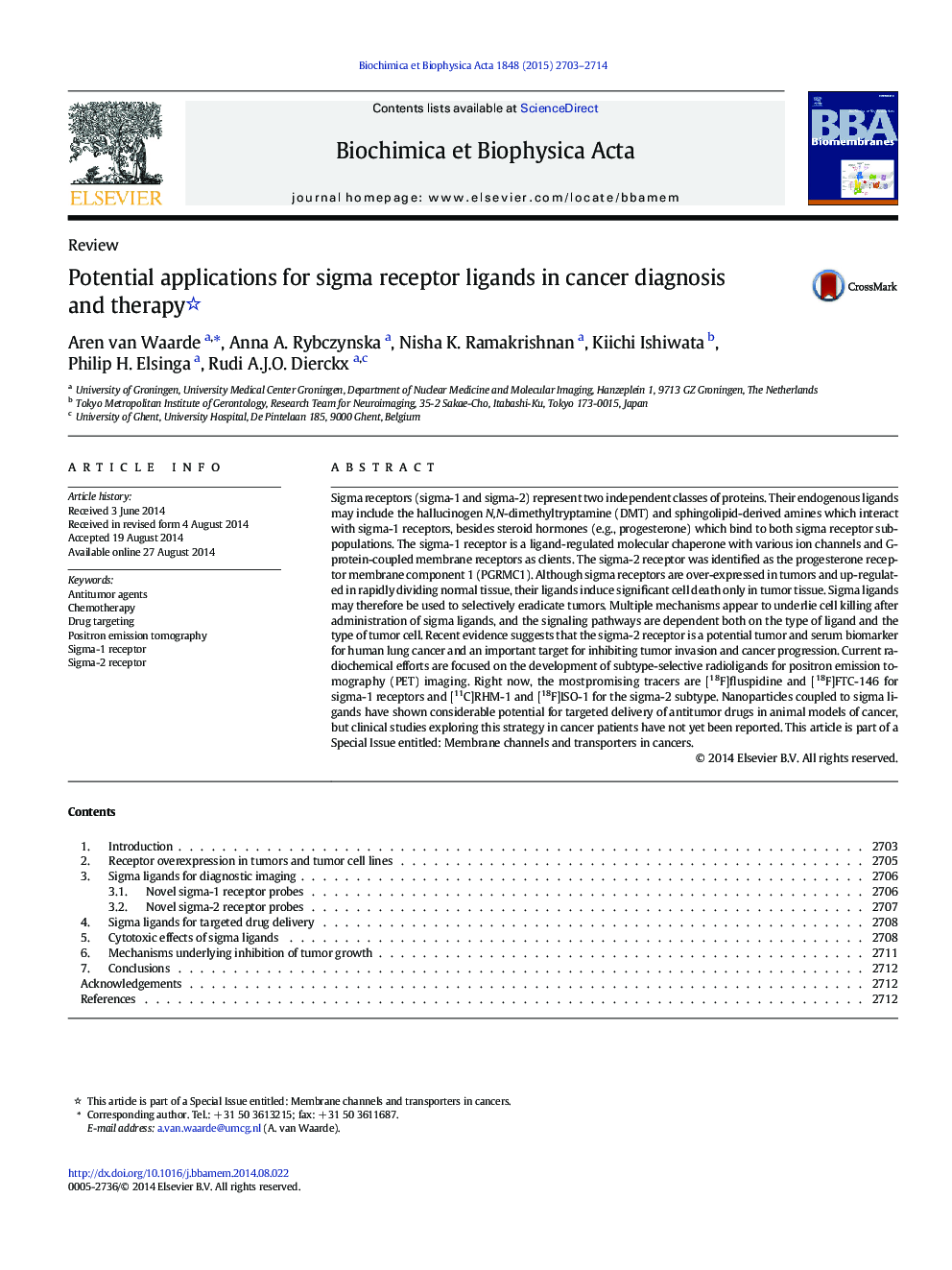| کد مقاله | کد نشریه | سال انتشار | مقاله انگلیسی | نسخه تمام متن |
|---|---|---|---|---|
| 1944089 | 1053177 | 2015 | 12 صفحه PDF | دانلود رایگان |
• Sigma-2 receptor has been identified as progesterone receptor membrane component 1.
• Subtype-selective radioligands for PET imaging of sigma-receptors are available.
• These are useful for tumor detection, staging, and response monitoring.
• Nanoparticles coupled to sigma ligands can be used for targeted drug delivery.
• Sigma ligands may be employed as single agents or adjuvants in chemotherapy.
Sigma receptors (sigma-1 and sigma-2) represent two independent classes of proteins. Their endogenous ligands may include the hallucinogen N,N-dimethyltryptamine (DMT) and sphingolipid-derived amines which interact with sigma-1 receptors, besides steroid hormones (e.g., progesterone) which bind to both sigma receptor subpopulations. The sigma-1 receptor is a ligand-regulated molecular chaperone with various ion channels and G-protein-coupled membrane receptors as clients. The sigma-2 receptor was identified as the progesterone receptor membrane component 1 (PGRMC1). Although sigma receptors are over-expressed in tumors and up-regulated in rapidly dividing normal tissue, their ligands induce significant cell death only in tumor tissue. Sigma ligands may therefore be used to selectively eradicate tumors. Multiple mechanisms appear to underlie cell killing after administration of sigma ligands, and the signaling pathways are dependent both on the type of ligand and the type of tumor cell. Recent evidence suggests that the sigma-2 receptor is a potential tumor and serum biomarker for human lung cancer and an important target for inhibiting tumor invasion and cancer progression. Current radiochemical efforts are focused on the development of subtype-selective radioligands for positron emission tomography (PET) imaging. Right now, the mostpromising tracers are [18F]fluspidine and [18F]FTC-146 for sigma-1 receptors and [11C]RHM-1 and [18F]ISO-1 for the sigma-2 subtype. Nanoparticles coupled to sigma ligands have shown considerable potential for targeted delivery of antitumor drugs in animal models of cancer, but clinical studies exploring this strategy in cancer patients have not yet been reported. This article is part of a Special Issue entitled: Membrane channels and transporters in cancers.
Use of sigma ligands for cancer diagnosis and treatment. Left panel: [11C]SA4503 scans of the brain of a healthy rat (A) and a rat with spontaneous pituitary tumor (B). Since sigma-1 receptors are strongly overexpressed in pituitary tumors, even very small tumors are clearly visualized in the scan. Right panel: Inhibition of the growth of a human melanoma xenograft in nude mice after daily treatment of animals with the sigma ligand rimcazole. Data taken from references [37] and [86].Figure optionsDownload high-quality image (83 K)Download as PowerPoint slide
Journal: Biochimica et Biophysica Acta (BBA) - Biomembranes - Volume 1848, Issue 10, Part B, October 2015, Pages 2703–2714
